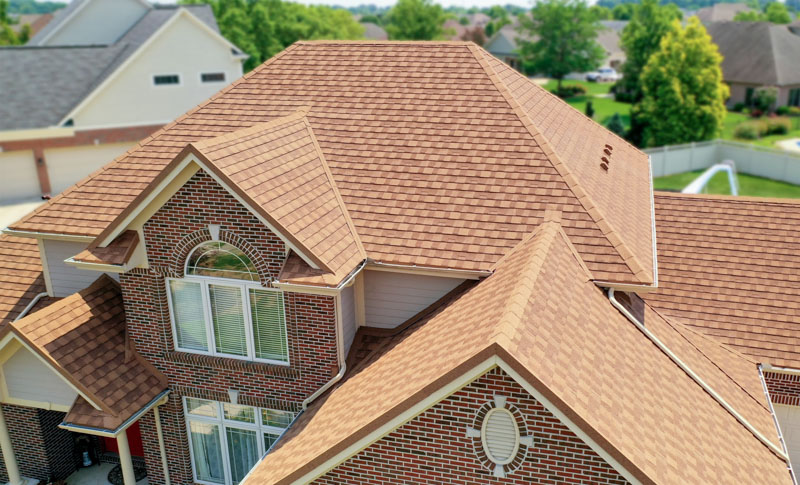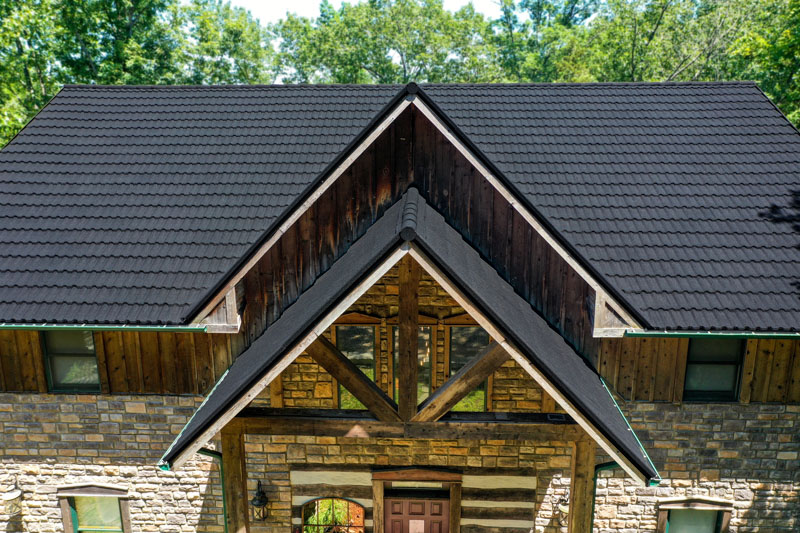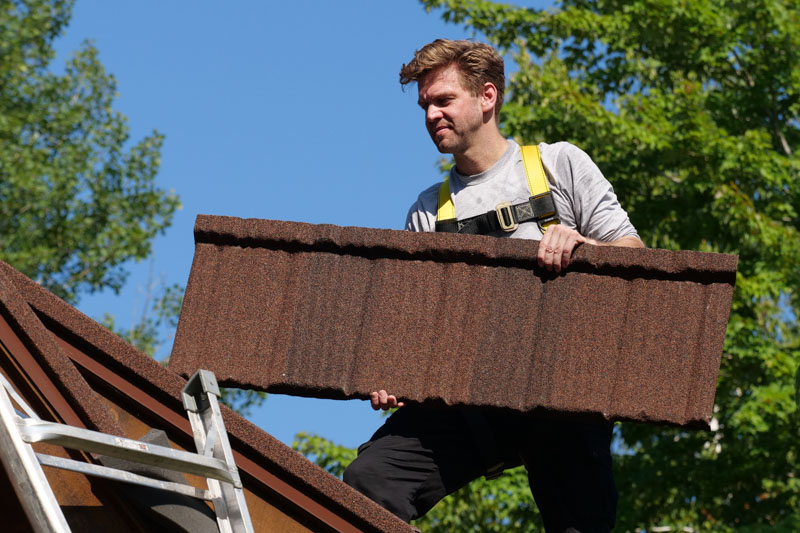Investing in a new roof for your home is a major decision. It’s essential to think carefully about every aspect of the project, what you hope it will accomplish, and how to get the most value out of your new roof. Most people in this position will consider the type of new roof they want to install, the color, the additional features like ventilation and robust flashing, and maybe even skylight installation. However, one of the most often overlooked aspects of installing a new roof is roof slope, or the angle and length at which roofs slope downward from their highest points. Although roof slope may seem like a minor detail, it can actually have a significant influence on the final price of a new roof.
In This Article
What Is Roof Slope?

Roof slope, also referred to as roof pitch, is the measure of the steepness of a roof’s surface. Roofers typically measure this in number sets based on the inches of rise of the roof slope per 12 inches. For example, a roof slope of 6/12 would rise six inches for every 12 inches of roof. A roof slope of 10/12 would rise 10 inches for every 12 inches of roof.
Roofers generally consider a low slope roof to be any roof at 3/12 or less, rising no more than three inches per foot of roof. A medium slope roof would be any roof between 6/12 and 9/12, and a high slope roof is any roof with a slope of 10/12 or greater.
Why Are There So Many Roof Slope Options?
The simple answer to why there are so many roof slope options is the number of home styles available. Some homes function better and look better with lower roof slopes while others are designed to have high sloping roofs. The slope of a home’s roof typically depends on how the house is built and the internal layout. For example, a multistory home with relatively low floor square footage will probably have a higher roof slope than a sprawling one-story rancher.
Why Do Steep Roof Slopes Cost More?

When you hire a roofer to replace your roof, the price of the new roof hinges on many factors. Of course, the material and style of your new roof will be major factors, but the slope of the roof will also influence the price. The reason why higher slope roofs cost more to install is safety. When roofers install low sloping roofs that are generally safe for careful walking, they don’t need to use as much high-end safety equipment to complete the job. With a high sloping roof, stability is a much bigger concern, and the roofing team may need to use specialized safety equipment to complete the job safely. High sloping roofs also require more materials. Roofs with higher slopes require more shingles to ensure complete coverage.
Roofers typically base their rates on several factors, and parts and labor are the most significant. When it comes to labor, roofers will usually charge by the day or by the hour. When they need to use more extensive safety measures to install a high-sloping roof, this will naturally take longer to complete and therefore drive up the labor cost of the project. It’s also possible that the roofer you choose to perform your installation may not have the right tools, safety equipment, or personnel with the proper training to complete the job.
As far as materials are concerned, a higher roof slope will not only cost more in shingles but also nails, roofing cement, and other materials. This, in turn, will increase the cost of labor as more nails and more cement will require more time to finish installing.
Roofing companies also carry professional insurance coverage. If their premiums are higher because they provide higher-risk work like working on high sloping roofs and using specialized scaffolding equipment, they will likely pay more in monthly premiums. They will in turn pass this cost on to customers who will pay higher rates for their work.
How Will Roof Slope Affect the Price of My New Roof?
After considering the differences in parts and labor rates that come with different roof slopes, you might be wondering how the slope of your new roof will affect the price of the installation. If, for example, you have a 40-foot by 50-foot roof area, you could expect to pay as much as $7,000 for a new roof of that size at 3/12, which is the national average price to install a new roof with a relatively flat slope. A slope of 6/12 could add nearly another thousand dollars to the price. If you were to choose a 9/12 slope, the national average for a 40 by 50-foot roof would be more than $8,300. A high slope of 12/12 could cost $10,000 or more.
These examples would only apply to a roof with a very simple structure and only one surface to replace. If your home has a layout that requires a second story to the roof or a complex structure with lots of adjoining angles and valleys, you should expect to pay a lot more. However, there is one benefit to having a roof with more than one surface; if a particular room of your home has a damaged roof, you may only need to replace one section instead of the whole roof. If you have a flat roof or a single roof surface, you may pay quite a bit more when the problem is only on one small part of the roof.
Work With an Experienced Roofer

If you need to replace your roof, you should take your roof slope into consideration when collecting quotes for the job from local roofers. Do not assume that just because you have a small house your roof replacement will be cheap; roof slope and many other factors go into the price of a new roof installation. Choose a roofer who has a solid track record of successful jobs and a positive reputation within your community. You should also ensure the roofer has appropriate insurance coverage and the ability to handle the type of roof slope installation you need. A good roofer will sit down with you and go over every aspect of the price so you know what to expect from your roof installation project.
